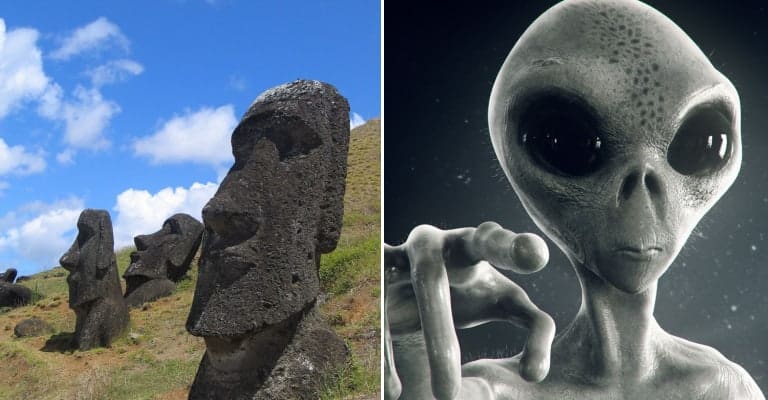Although humans teeter on the cusp of interplanetary travel, it has been a longstanding belief of some that extraterrestrial life has already visited us on Earth. Whilst some alien conspiracies revolve around UFO abductions and probing, others concern ancient structures.

From great wonders of the ancient world, including the Pyramids at Giza and Stonehenge, to rocks cut in a particular fashion in Peru, proponents of ancient astronaut theories suggest these constructs defy the technological capabilities of their time and that the only explanation for these marvels is aliens.
Here are some examples of monumental ancient works of art and construction that some people believe aliens are actually responsible for:
1. The Nazca Lines were NOT built to serve as an airfield for alien spacecraft

The Nazca Lines are a series of hundreds of ancient geoglyphs in the Nazca Desert of southern Peru, created sometime between 500 BCE and 500 CE. Depicting simple geometric shapes as well as complex animal designs the lines were formed by the creation of a shallow trench between 10-15cm deep, dispersing the reddish-brown surface of the desert and exposing lighter colored clay to create a contrasting image. Spanning an area of nearly 450 km2, with the largest figures reaching sizes of 440ft in length, it has been speculated by ancient astronaut proponents that the lines must have been formed by alien assistance.
Although not the progenitor of such theories, pseudo-scientist Erich von Däniken widely popularized the hypothesis that the Nazca Lines were built per the instruction of extraterrestrial beings to act as airfields for their spaceships. Contending individuals without access to aerial observation could never have produced such complex shapes and figures, Däniken’s books resulted in a significant surge in tourist attention to the Peruvian location in an attempt to verify the origins of the lines.
However, despite the popularity of Daniken’s work, the overwhelming archeological consensus remains that the Nazca Lines were created by pre-Columbian civilizations for an indeterminable cultural purpose, with the most likely possibilities including religious worship, cosmology, or as part of an agricultural ritual. Moreover contrary to ancient astronaut assumptions the Nazca Lines can in fact be seen from the ground, including nearby hills. Consequently, scholars have concluded the geoglyphs were most probably constructed using the simple tools available to the Nazca people, in addition to wooden marking stakes similar to those found by archeological surveys of the area. This method was successfully replicated by researcher Joe Nickell’s team across just a few days, with their work described as “remarkable in its exactness” by Scientific American.

